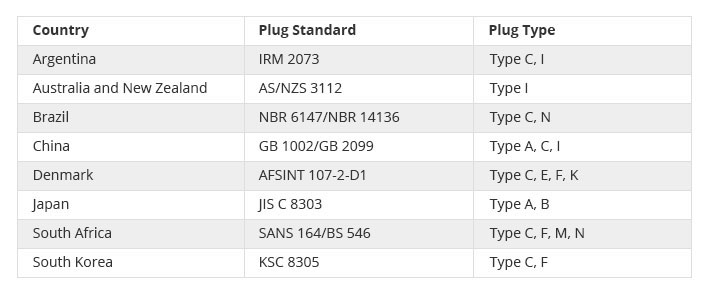How Much Do You Know About Power Cord Types?
Network engineers who work around the world are well aware of the many different plugs and sockets in use in data centers. But the first-time experience in a foreign data center might be hard if you don’t know which power cord is used there. There is more than one standard being used in the world. A different country may use different power cord types, different plugs, and connectors, especially the plug types.

International Standards IEC 60320
IEC 60320 is a set of standards specifying power cord appliances up to 250 volts. Though different country owns different power cord types and standards, the IEC 60320 is recognized as an international standard used by most countries in the world. The “C” represents the code standard for connectors made by IEC 60320. Different types of connectors are specified for different combinations of current, voltage, and temperature.

Among the connector types, C13, C15, and C19 are the most commonly used ones in data centers. Details are listed in the table below:

IEC 60320 power cords use an even number for the plug and an odd number for the mating receptacle, and usually, the male appliance inlet is 1 higher than the sheet for the corresponding female cable connector. Therefore the most commonly used power cord types are C14 to C13 and C20 to C19. Other common power cord types also include C14 to C15 and C16 to C15.
Besides IEC 60320: Different Country Has Different Standards
Though the IEC 60320 standard is used by most countries in the world, in fact, it mainly aims at the connectors types (C13, C15, C19). For plugs types, it differs from country to country.
North American: NEMA 5-15P (Type B)
The NEMA standards are commonly adopted in most North American countries and some countries that follow the NEMA standards. Among the NEMA 5-15P plugs are the most widely used in sockets. They are three-wire circuits (hot, neutral, and ground), and are rated at 15 A at 250 V, although they usually carry 110 V.

NEMA 5-15P to NEMA 5-15R power cord is the most common type. The NEMA 5-15P stands for the plug, and the NEMA 5-15R stands for the receptacle. Other frequently used power cord types that use NEMA 5-15 plugs include NEMA 5-15P to C13 and NEMA 5-15P to C15.

Europe: CEE 7/7 (Type E, Type F)
CEE 7/7 is now the de facto plug standard in many European countries, and in some countries that follow the CENELEC standard. European countries that do not use CEE 7/7 are Denmark (AFSNIT 107-2-D1), Ireland, Italy (CEI 23-50), Malta (BS 1363), Cyprus (BS 1363), Gibraltar (BS 1363), and Switzerland (SEV 1011). The most popular power cords that adopt CEE 7/7 plug include CEE 7/7 to C13, CEE 7/7 to C15, and CEE 7/7 to C19.

Other Standards: JIS C 8303, AS/NZS 3112 etc.
Some other countries also have their own plug standard. For example, Australian standard AS/NZS 3112 (Type I), Brazilian standard NBR 14136 Japanese standard JIS C 8303 (Type A, B), etc. But one common thing is that they might all adopt the IEC 60320 connector standard.

Related Articles:
Advanced Tips for Ensuring Maximum Safety with IEC Power Cords
Explore the Evolution and Importance of Power Cords in Modern Technology
También podría interesarte
Dirección de correo electrónico

-
T568A y T568B: dos estándares de cable de red RJ45
jul 15, 2021
-
¿Qué es un patch panel y por qué lo necesitamos?
jul 6, 2021













